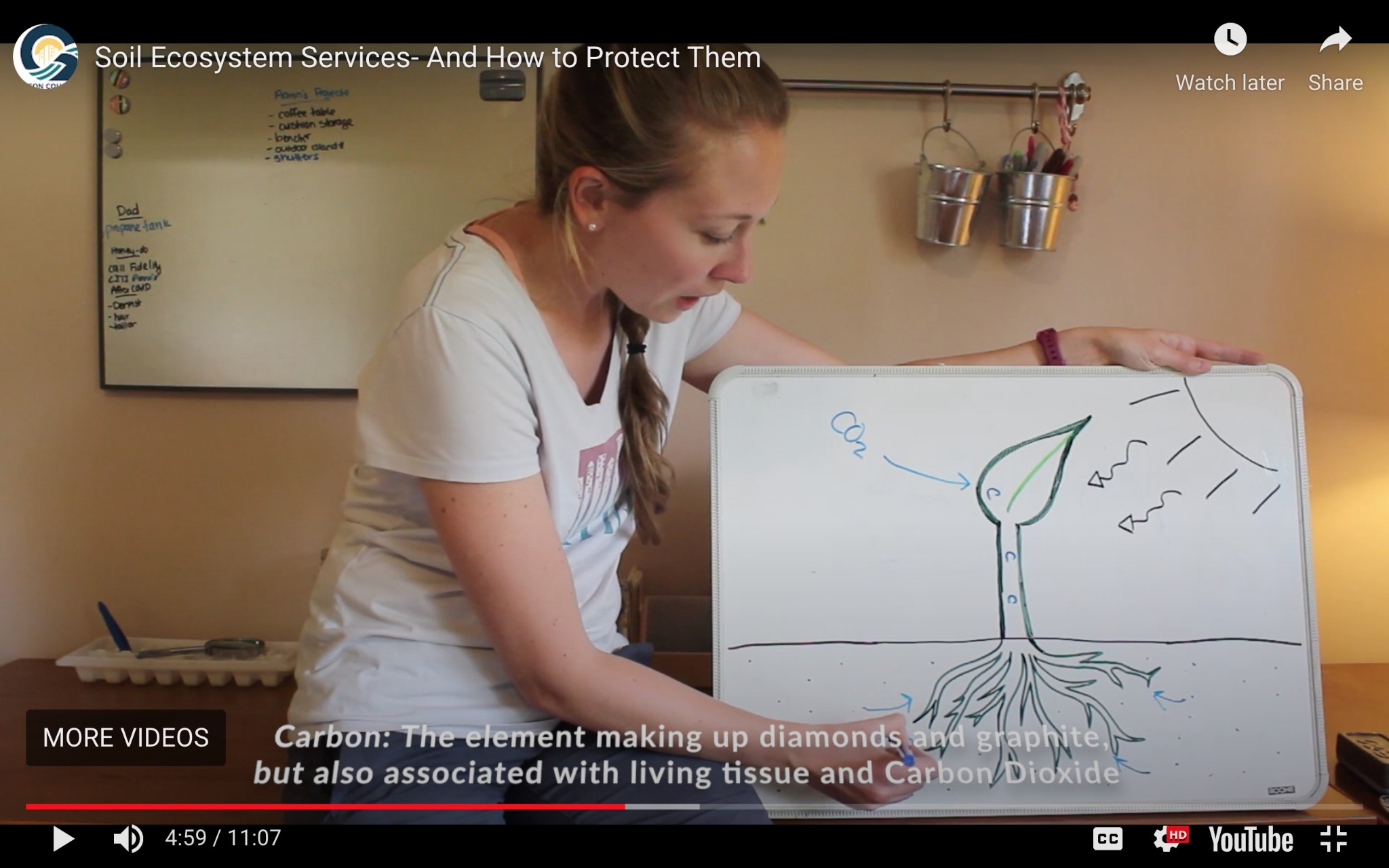Gaston County Soil Stewardship
In this program for middle and high school students in Gaston County, North Carolina, students first learn content knowledge through videos and activities, and then complete a field investigation prior to a synchronous discussion with the educator. In the asynchronous part of the program, the environmental educator discusses the benefits of healthy soil and interviews a local farmer to find out how he takes care of the soil on his farm. At the end of the video, students are tasked with designing their own soil-friendly yard or green space. In this short video, the following principles are evident:
- This module is an example of preparation as it provides students with skills and background knowledge that will enable them to successfully participate in the synchronous discussion with the environmental educator. By introducing information ahead of time, students are more ready to ask and answer questions about soil conservation and careers in the field.
- The educator uses multiple modalities (audio, visual, and/or kinesthetic) to make content accessible and optimize student learning. Interspersed throughout her interview with the farmer, she uses a whiteboard to provide deeper explanations of terms and simplified visuals of processes. She also uses text overlay in the video to define key ideas and questions.

- This program demonstrates social-ecological connections, or the connections between humans and the ecological systems that surround us, by exploring the relationships between farming, soil health, and climate change. The educator uses the interview with the farmer to draw attention to the causes of environmental problems, such as erosion and climate change, as well as their effects on society and natural systems.
- This program emphasizes the potential for positive solutions or outcomes by focusing on how we can collectively achieve positive changes through soil stewardship practices. Beginning at about 4:35, the educator explains how plants and soil work together to sequester carbon and discusses how improved farming practices can help to reduce climate change. This is an example of positive framing.


